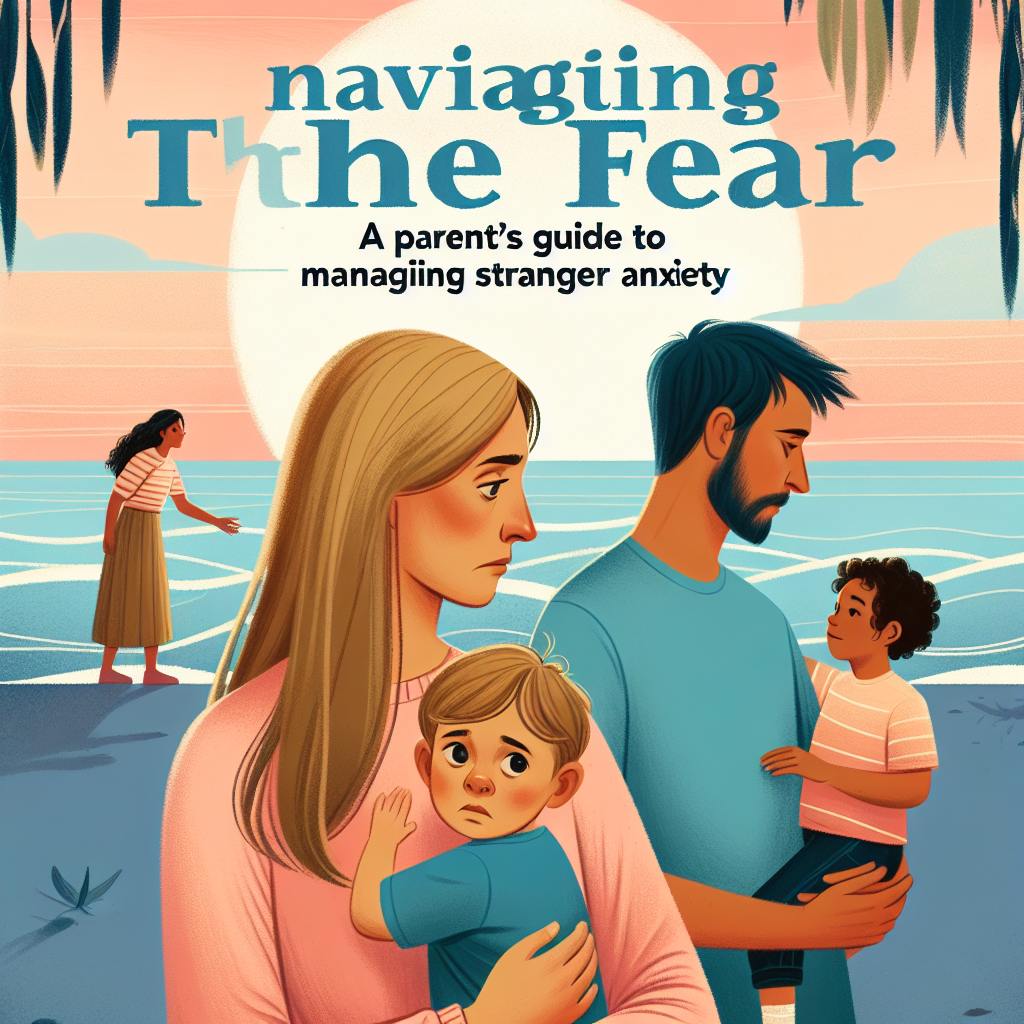
Introduction
Stranger anxiety is a common phase in child development, often characterized by fear or caution around unfamiliar individuals. As a parent, you may find yourself grappling with the delicate balance of protecting your child while also encouraging their social development. Whether it’s at the park or during family gatherings, navigating these fears is vital for your child’s emotional health. In this comprehensive guide, Navigating the Fear: A Parent’s Guide to Managing Stranger Anxiety aims to arm you with actionable insights, proven strategies, and real-world case studies to help your little one thrive socially and emotionally.
Understanding Stranger Anxiety
What is Stranger Anxiety?
Stranger anxiety is a natural emotional response that many children experience, typically starting around 6 months of age and peaking between 1 to 2 years. This behavior stems from an innate survival instinct; recognizing familiar faces provides a sense of safety and security.
Developmental Context
Understanding the developmental stages of your child can provide insights into their behavior. For example, younger infants may display distress when separated from their primary caregivers, while older toddlers may actively refuse to engage with unfamiliar people.
| Age Range | Common Behavior |
|---|---|
| 0-6 months | Basic recognition of caregivers |
| 6-12 months | Visible distress when a stranger approaches |
| 1-2 years | Active avoidance of unfamiliar individuals |
| 3-5 years | Mixed responses—curiosity mixed with caution |
The Emotional Landscape of Stranger Anxiety
Feeling Safe vs. Feeling Threatened
At the heart of Navigating the Fear: A Parent’s Guide to Managing Stranger Anxiety lies the critical distinction between perceived safety and perceived threat. Children read non-verbal cues from both their caregivers and strangers. If a parent appears relaxed, the child is more likely to feel secure. Conversely, tension or anxiety in the caregiver can heighten a child’s fear.
Case Study: The Family Outing
Consider the Smith family, who took their two-year-old, Emma, to a community picnic. Initially, Emma clung to her mother’s leg when approached by a friendly stranger offering her a balloon. However, after her mother smiled and encouraged her to accept the balloon, Emma gradually warmed up and even participated in games with other kids.
Analysis: This case study illustrates that parental cues can significantly impact a child’s behavior. The mother’s reassuring demeanor helped Emma navigate her fear of the stranger effectively.
Practical Strategies for Managing Stranger Anxiety
1. Validate Your Child’s Feelings
Start by acknowledging your child’s feelings—let them know it’s perfectly normal to feel scared. Saying phrases like “I understand you’re scared” can help your child feel seen and understood.
2. Gradual Exposure
Introduce your child to new people slowly. This might mean starting with small gatherings of family or friends before venturing into larger, unfamiliar environments.
3. Role-Playing Scenarios
Consider using role play to simulate social interactions. Use stuffed animals or dolls to act out situations where a new person approaches, and talk through possible reactions.
4. Positive Reinforcement
Celebrate small victories. If your child engages with someone new, praise them enthusiastically afterward. This builds their confidence and encourages them to try again.
Case Study: The Neighborhood Walk
The Reeds, a family living in a tight-knit community, decided to take evening walks where they greeted their neighbors. Initially, four-year-old Max was shy and refused to wave. However, after several weeks of guided exposures, Max began greeting neighbors enthusiastically.
Analysis: Repeated, low-pressure interactions allowed Max to form positive associations with new people and interactions, which mitigated his anxiety over time.
The Role of Social Stories
What are Social Stories?
Social stories are narrative tools designed to help children understand social situations. They break down scenarios into manageable steps, which can demystify new situations.
Crafting Your Own
You can create simple social stories that incorporate familiar characters, such as their favorite animal or cartoon figure, and include positive outcomes when meeting new people.
Understanding Warnings vs. Caution
Teaching the Difference
While it’s essential to teach children to be cautious, it’s equally crucial not to instill an overwhelming sense of fear. Use examples to explain when to be wary without fostering paranoia.
Key Takeaway: Empowerment vs. Enmeshment
Empower your child with the tools to understand safe and unsafe interactions rather than wrapping them in fear. Use questions like “What would you do if someone asked you to go somewhere with them?” to stimulate critical thinking.
Creating Safe Spaces
Home and Community
When navigating stranger anxiety, creating a safe home environment can build a child’s overall confidence. Ensure your home is a space where they can openly discuss their feelings without judgment.
Community Rules
Teach children about community safety. Use adult supervision and discuss guidelines, like "If you feel uncomfortable, you can always come to me or another trusted adult."
Frequently Asked Questions (FAQs)
1. When should I be concerned about my child’s anxiety around strangers?
If your child’s anxiety persists beyond the typical developmental stages or significantly interferes with daily activities, it may be prudent to consult a child psychologist.
2. Is stranger anxiety normal in all children?
Yes, while most children experience some level of stranger anxiety, the intensity and duration can vary widely.
3. How can I differentiate between normal anxiety and an issue that needs professional help?
Signs that may warrant concern include extreme meltdowns that last longer than usual, refusal to leave home, or severe withdrawal. Consult a professional for guidance if you’re uncertain.
4. Should I force my child to interact with strangers?
It’s generally not recommended. Allow your child to dictate their comfort level with social interactions, which helps build their sense of safety.
5. How can I support my child if they aren’t ready to engage?
Encourage safe exploration from a distance at first. You might say, "It’s okay if you want to watch before joining in."
Conclusion
Navigating the intricate maze of stranger anxiety can feel overwhelming, but with the right tools, you can help guide your child through these feelings. By validating emotions, gradual exposure, and empowering your child with knowledge, you pave the way for a confident and socially adept little one. Remember, Navigating the Fear: A Parent’s Guide to Managing Stranger Anxiety is about fostering trust and security, both in your child and within your family. Develop these skills together, and watch as your child flourishes in new situations, developing friendships and a strong sense of self.
Your journey through this process is not just about managing fear; it’s about equipping your child with the emotional tools they need for a lifetime of social interaction, trust, and resilience. Today, take the first step towards transforming fear into confidence, ensuring they are well-prepared for a world full of strangers and new experiences.
















